A Simple Little Box That Shoots Vibrant Photos: Sigma Fp L Review
For more stories like this, please subscribe to The Phoblographer.
The Sigma fp L is arguably one of the most innovative mirrorless cameras on the market. It’s a stripped-down camera that, with accessories, allows photographers to build back only what is needed. It’s got a lot: from grips to viewfinders and a hot shoe slot. Carrying on with the same body style as the original fp, the Sigma fp L adds a higher-resolution 61-megapixel sensor. The autofocus also gets a boost, and the camera houses more color profiles, along with other smaller tweaks.
But, while innovative, has Sigma stripped away too much? The mirrorless camera lacks a physical, mechanical shutter, relying instead on only an electronic one. It lacks in-body optical stabilization. If you want a hot shoe flash, you can’t add on a viewfinder. And where many companies are making autofocus systems that require three digits to count the points, the Sigma fp L has just 49.
Editor’s Note: Typically, when you’re as authentic and large as we are, you work with manufacturers to get products in for review. But it’s also not uncommon to hear demands from brands to change your coverage to something more positive when it doesn’t deserve it. Despite having reviewed the largest database of Sigma prime lenses, Sigma felt we were too harsh on their products. They haven’t responded to our last email, so we asked LensRentals to help us out. LensRentals, like us, champions authenticity and honesty. We’re elated to have and promote partners like them. And we recommend checking them out if there is any gear you want to try. When you click our links and rent from them, we’ll receive affiliate commissions. And as always, we only recommend the brands we think are the best. As the site’s Editor in Chief, I oversee all the reviews. When something is just wrong, we’ll correct it, but our reviews are rarely wrong. And I encourage everyone to lean into their emotions and feelings while presenting facts. Why am I writing this? Because I believe the photography blogging world needs this level of transparency.
Too Long, Didn’t Read
The Sigma fp L is a box that takes pretty pictures. The colors are excellent, but the ergonomics are sorely lacking and the omission of a mechanical shutter is a major issue. It lacks the stabilization and speed of similarly priced cameras.

Pros and Cons
Pros
- Solid image quality, with good high ISO performance
- Excellent colors, when properly exposed
- Lots of great color profiles, including orange and teal
- Tiny and lightweight
- Ability to customize grip and viewfinder
Cons
- Can’t have both a hot shoe slot and a viewfinder at the same time
- Single SD card slot
- Difficult to hold without purchasing the add-on grip
- Not compatible with most third-party straps
- Slower start-up and record
- Slower autofocus
- No optical IBIS
- No electronic shutter means rolling shutter
- Limited controls
- 240 shot battery life
- The price makes no sense
Gear Used
I used the Sigma fp L with the Sigma 85mm f1.4 DG Art lens. You should rent it from LensRentals.
Innovations
The Sigma fp L is arguably the most innovative full-frame camera on the market right now after the Sony a1. The bigger question is whether those differences are truly worthwhile for most photographers. The Sigma fp L is a modular camera. Consider it a blank slate. It’s a box where you can choose your own grip, decide whether or not you want a viewfinder, or use it as a tiny mirrorless body on a gimbal or tripod. While different, the innovations aren’t truly beneficial for photographers shooting handheld.
Tech Specs
LensRentals, who provided the review sample for this review, lists these tech specs for the Sigma fp L:
- Aspect Ratio: 1:1, 2:1, 3:2, 4:3, 7:6, 16:9, 21:9
- Audio File Formats: Linear PCM (Stereo)
- Audio Recording: Built-In Microphone (Stereo)
- External Microphone Input (Stereo)
- Autofocus Points: Phase Detection 49
- Autofocus Sensitivity: -5 to +18 EV
- Battery: 1x BP-51 Rechargeable Lithium-Ion, 7.2 VDC, 1200 mAh (Approx. 240 Shots)
- Bit Depth: 14-Bit
- Built-in Flash: No
- Camera Type: Mirrorless
- Connectivity: USB Type-C (USB 3.1), HDMI D (Micro), 3.5mm Microphone
- Continuous Shooting Electronic Shutter: Up to 10 fps at 61 MP for up to 12 Frames (RAW) / 14 Frames (JPEG)
- Dedicated Flash System: S-TTL
- Depth: 1.8”
- Exposure Compensation: -5 to +5 EV (1/3 EV Steps)
- Exposure Modes: Aperture Priority, Manual, Program, Shutter Priority
- External Flash Connection: Hot Shoe (via provided adapter)
- External Video-Recording Modes: RAW 12-Bit
- DCI 4K (4096 × 2160) at 24.00p
- UHD 4K (3840 × 2160) at 23.976p/24.00p/25p/29.97p
- Full HD (1920 × 1080) at 23.976p/24.00p/25p/29.97p/50p/59.94p/100p/120p
- Flash Compensation: -3 to +3 EV (1/3 EV Steps)
- Flash Modes: Manual, Rear Sync, Slow Sync, Slow Sync/Red-Eye Reduction, TTL Auto
- Focus Modes: Continuous-Servo AF, Manual Focus, Single-Servo AF
- Focus Type: Auto and Manual Focus
- GPS: No
- Height: 2.8”
- ISO Range: Auto, 100 to 25600 (Extended: 6 to 102400)
- Image File Formats: DNG, JPEG
- Image Stabilization: Digital (Video Only)
- Interval Recording: Yes
- Maximum Sync Speed: 1/15 Second
- Memory Card Slot: 1x SD/SDHC/SDXC (UHS-II)
- Metering Modes: Center-Weighted Average, Evaluative, Spot
- Metering Range: -5 to 18 EV
- Monitor Resolution: 2,100,000 Dot
- Monitor Size: 3.15”
- Monitor Type: Fixed Touchscreen LCD
- Mount: L Mount
- Operating Temperature: 32 to 104°F / 0 to 40°C
- Recording Limit: Up to 120 Minutes for UHD 4K (3840 × 2160)
- Self Timer: 2/10-Second Delay
- Sensor Dimensions: 36 × 24mm
- Sensor Resolution
- Actual: 62.4 Megapixel
- Effective: 61 Megapixel (9520 × 6328)
- Sensor Size: Full Frame
- Sensor Type: CMOS
- Shutter Speed Electronic Shutter: 1/8000 to 30 Second, 0 to 300 Seconds in Bulb Mode
- Video Encoding: NTSC/PAL
- Video Recording Modes:
- RAW 12-Bit: Full HD (1920 × 1080) at 23.976p/24.00p/25p/29.97p/50p/59.94p
- RAW 10-Bit: Full HD (1920 × 1080) at 23.976p/24.00p/25p/29.97p/48.00p/50p/59.94p
- RAW 8-Bit: UHD 4K (3840 × 2160) at 23.976p/24.00p/25p
- Full HD (1920 × 1080) at 23.976p/24.00p/25p/29.97p/48.00p/50p/59.94p/100p/119.88p H.264/MOV 4:2:2 8-Bit
- UHD 4K (3840 × 2160) at 23.976p/24.00p/25p/29.97p
- Full HD (1920 × 1080) at 23.976p/24.00p/25p/29.97p/48.00p/50p/ 59.94p/100p/119.88p
- Webcam Functionality: Yes
- Weight: 0.9 lb. (Body with battery and memory), 0.8 lb. (Body only)
- White Balance: Auto, Color Temperature, Custom, Daylight, Flash, Fluorescent, Incandescent, Overcast, Shade
- Width: 4.4”
- Wireless: No
Ergonomics
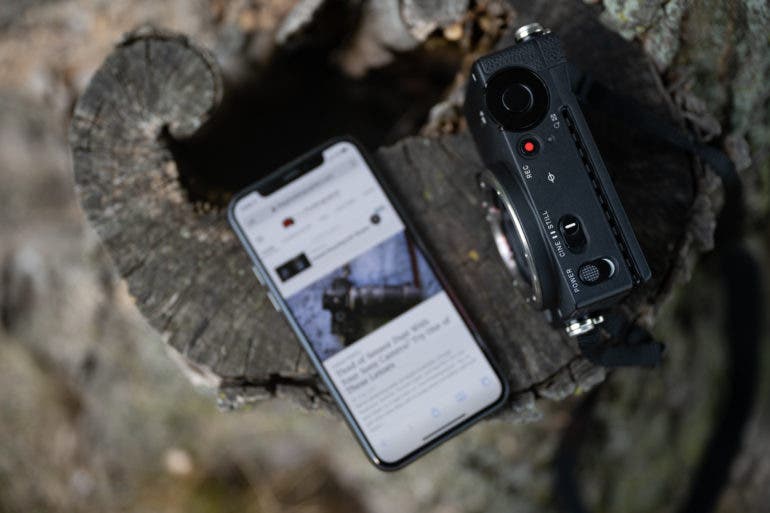
The Sigma fp L is a blank slate that you can somewhat customize to your liking. But, straight out of the box, it’s, well, a box. Without a grip, viewfinder, or hot shoe slot, the body is almost a perfect rectangle. There’s a small bump out around the lens mount and a small lip below the LCD screen at the back. Otherwise, the fp L is all smooth lines.
The lack of a grip and viewfinder is how Sigma is claiming the “world’s smallest and lightest” title. The fp L weighs 13.2 ounces (15.1 oz. with the battery and memory card). It’s only 1.8 inches deep and its considerably narrower than the length of my iPhone. But, the add-on viewfinder weighs four ounces. That brings it up to 19.1 oz., not including adding a grip. The Sony a7C, the previous holder of that “world’s smallest and lightest” title weighs 17.6 ounces. If you’re going to take advantage of the fp L’s coolest features — the ability to customize — it’s no longer the smallest and lightest. (To be fair, it is still lighter than the a7R IV, which is closer in megapixels than the a7C.)

Along with the lack of a viewfinder, there’s no hot shoe slot. Sigma provides an add-on one in the box. But, you can’t use it at the same time as the viewfinder, since both accessories are made to attach to the same port. Both plug into the left-hand side by removing the HDMI port cover. (That same side also houses the mic and USB ports). The HDMI rubber port cover is loose and not attached to the camera. The viewfinder has a designated hidey-hole for it. But, it’s going to be prone to loss.
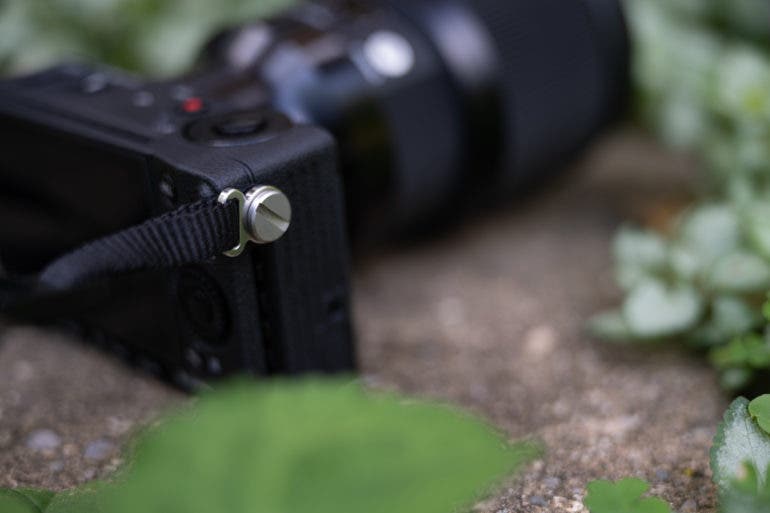
Using either accessory also requires removing the camera strap, which actually screws into the side of the camera. The strap can also be screwed into the tripod port to be worn as a sling strap. That’s going to make it tough to use a third-party strap with this camera, however. The strap uses a metal ring that fits specifically on tripod mount sized screws. Thankfully, the included strap is much better than the scratchy ones typically included with most cameras. It has a soft, suede-like feel. But, if you want something different, the options are going to be limited.
“I tested the Sigma fp L without the accessory grip and with a heavy 85mm lens. Shooting that way required a second hand on the lens, or the corner of the body dug into my palm. There’s nothing to wrap your fingers around. I couldn’t shoot one-handed for more than a few minutes before my palm started to hurt.”
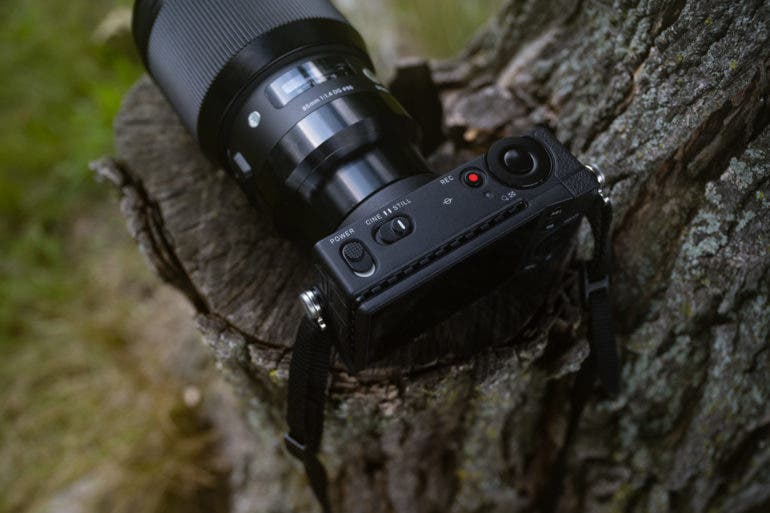
Along with the missing viewfinder and hot shoe slot, the controls at the top of the camera are minimalist. There’s a large control dial wrapped around the shutter release, a record button, a still to video mode switch, and a power switch.
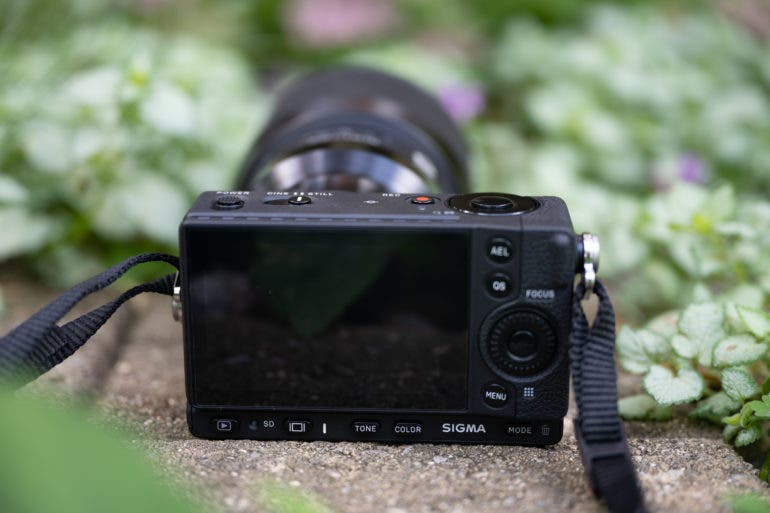
The back is also simple. The menu controls double as a second control wheel. There’s an AE-L, quick menu, and menu button. Then, in that lip below the LCD, there’s buttons for playback, display, tone, color, and mode. There’s no joystick for selecting the autofocus point.
The only button on the front is to release the lens. The right side is empty, the left has the ports for the accessories. The single SD slot goes in the bottom, in the same door as the battery.
I tested the Sigma fp L without the accessory grip and with a heavy 85mm lens. Shooting that way required a second hand on the lens, or the corner of the body dug into my palm. There’s nothing to wrap your fingers around. I couldn’t shoot one-handed for more than a few minutes before my palm started to hurt. Out of the box, the fp L is going to be ideal for applications like gimbals and tripods. But, for hand-held shooting, that add-on grip is basically a requirement. I can’t say how comfortable it is because I haven’t tested the grip, but I’m assuming it’s better than without.
Build Quality
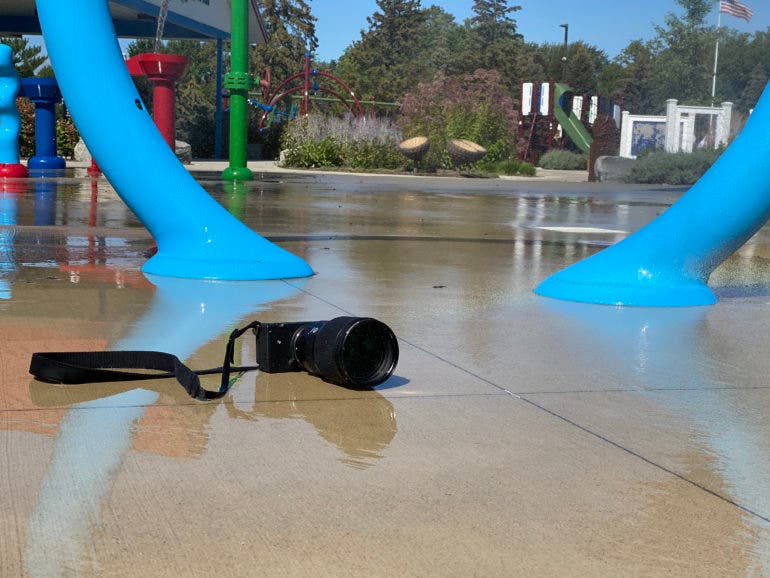
Sigma says that the fp L is sealed at 42 points. I took the camera to a splash park and, true to Sigma’s word, the camera held up just fine. I shot around the edges of the splash park and ran the camera through the lighter mists and splashes that are roughly equivalent of light rain. The only ill effect was that the touchscreen doesn’t always recognize a touch if there are still water droplets on it. But, the same holds true for most touchscreens.
For being a lightweight camera, the fp L is well-built. It’s not the luxurious magnesium alloy of some cameras. But, it doesn’t feel like a cheap camera.
Autofocus

The fp L uses a phase-detection and contrast-detection autofocus system, an upgrade from the contrast-only fp. The system, however, only uses 49 autofocus points, which is seriously behind competing cameras like the a7R IV’s 567.
Unlike the earlier Sigma fp, the fp L has eye AF. Sometimes, the Eye AF was perfect. Other times, it focused on the eyelashes or eye brows. And sometimes, I knew in-camera that the eye AF wasn’t going to get it right because it was following other parts of the face right on the LCD screen.
While out shooting, the fp L didn’t seem to lock onto moving subjects very well. I had my dog sit still, then run towards me with continuous autofocus and tracking on. Only the first image, as he was taking off, was in focus. I had similar results in continuous autofocus with the single point focus area. The Sigma fp L also has fewer AF area modes — there’s just the auto area, the single point with three different sizes, and tracking.
The autofocus does have its higher points, however. The tech specs list an autofocus range that goes down to -5 EV, which is quite good. While the fp L was slow to focus in a dark closet, it focused in corners that I thought were too dark.
Speed
When I first turned the Sigma fp L on, I thought the battery was dead. That’s how slow the start-up is. Sometimes, it starts up in three seconds. Other times, start-up feels longer. If you turn the camera off to preserve battery — which is rated at only 240 shots — there’s a good chance you might miss a moment waiting for the camera to be ready to shoot.
The recording of the images itself also feels sluggish. I originally thought I had put the wrong card in it was so slow. But, that wasn’t the case. With a Class 10 card, I had to wait before I could bring the image up on the screen, especially when using burst mode. The Sigma fp L will shoot bursts at 10 fps on high speed and can only handle about 12 images in DNG + JPEG mode at a time.
Ease of Use
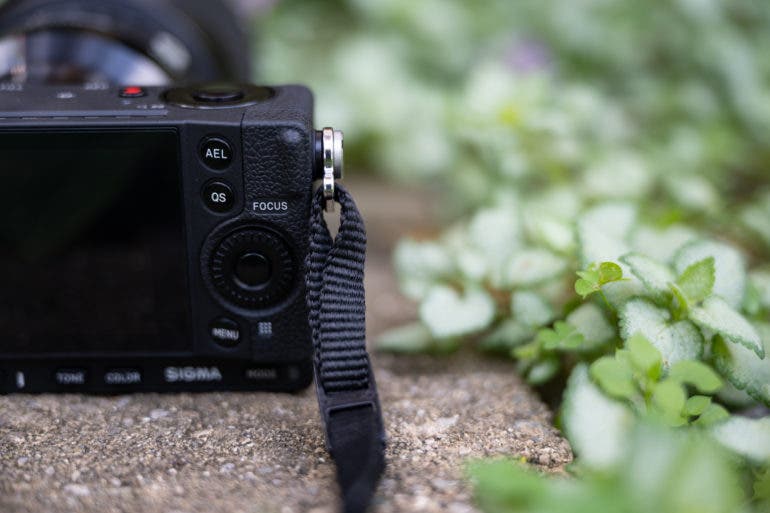
For experienced photographers, the lack of physical controls makes the fp L a little tougher to use. Adjusting several settings will take a little longer than a camera with a more traditional control scheme. Without the AF joystick, you can use the touchscreen or hit the down button, the AEL button, then move the point — two extra steps. While the quick menu is simple to access, it’s not as fast as physical controls. I would have preferred at least one more dial so that I didn’t have to dig into the quick menu for ISO.
The lack of controls makes the camera seem a little less daunting. But, in some cases, the fp L may still be tricker to learn. The camera’s design is so unlike any other camera that some settings that are almost universal are in different locations. Unlike the mode dial of most cameras, there’s a button at the bottom, for example. There’s no auto mode or scene modes, just the M, A, P, S and six slots for custom modes.
The full menu is divided into three sections — shoot, play (as in playback), and system. It’s a simple, short menu system that’s quick to flip through if you’re not familiar with the camera.
Metering
Taking a photo using the Sunny 16 Rule, the Sigma fp L was close to accurate, though a touch underexposed for my taste. The camera felt a little inconsistent metering on a sunny day in spot metering, but I believe this was partly due to using spot metering on objects that were part in sun and part in shadow.
Image quality

Many camera companies are skipping out on the sensor filters that prevent moire in order to preserve more detail. Sigma, however, asked, do you really need extra detail on a 61 megapixel sensor? The Sigma fp L’s full-frame CMOS sensor still has an anti-aliasing filter. And, well, Sigma was right about one thing — 61 megapixels is plenty of detail with the anti-aliasing filter. Images have a good balance of sharpness, detail, and texture. While 61 megapixels shows pore-level detail, I felt like close-up portraits didn’t need quite as much retouching.
I’ve always loved the colors from Sigma’s Art lenses, which tend to have bright, warm colors that work well with my personal style. I can say the same about the fp L. The fp L uses a Bayer sensor with an RGB color array, which is a deviation from the sensors found in competing cameras from Sony and Nikon. (Canon also uses an RGB color array). RGB sensors use more green than the other colors in order to better replicate what the eye sees in daylight.
The colors are bright and well-saturated, without overdoing it. Skin renders beautifully. I preferred the skin tones in an unedited RAW file from the fp L over a similar portrait shot on the Nikon Z7 II. The camera includes several different color profiles that work well. The orange and teal color profile was a favorite, which gives the images a more film-like, cinematic look. The only complaints I had about colors is that shadows tended towards green above ISO 3200. And those beautiful colors seem to wash out faster when overexposed. Overexposed shots in the standard color profile looked much more muted than I expected.
As great as the colors are, there are some serious shortcomings. The fp L doesn’t have a mechanical shutter, only an electronic one. I could spot the rolling shutter effect even in some portraits of seated subjects. Take a look at how the corner of the doorframe bends in the second portrait, and not the one shot in a burst just before it. Moving subjects are even worse — I asked a six-year-old to jump for a picture. Because of the motion, in some photos, her face is round. In others, elongated. Electronic shutters can also cause banding, though the banding I could see on the LCD screen wasn’t obvious in images on my computer screen.
The fp L also lacks in-body stabilization that other full-frame cameras at this price point offer. Sigma lenses tend to be on the heavy side (though, of course, you can use Panasonic and Leica). There were a few shots with that 85mm that probably would have been sharper with stabilization.
High ISO Images
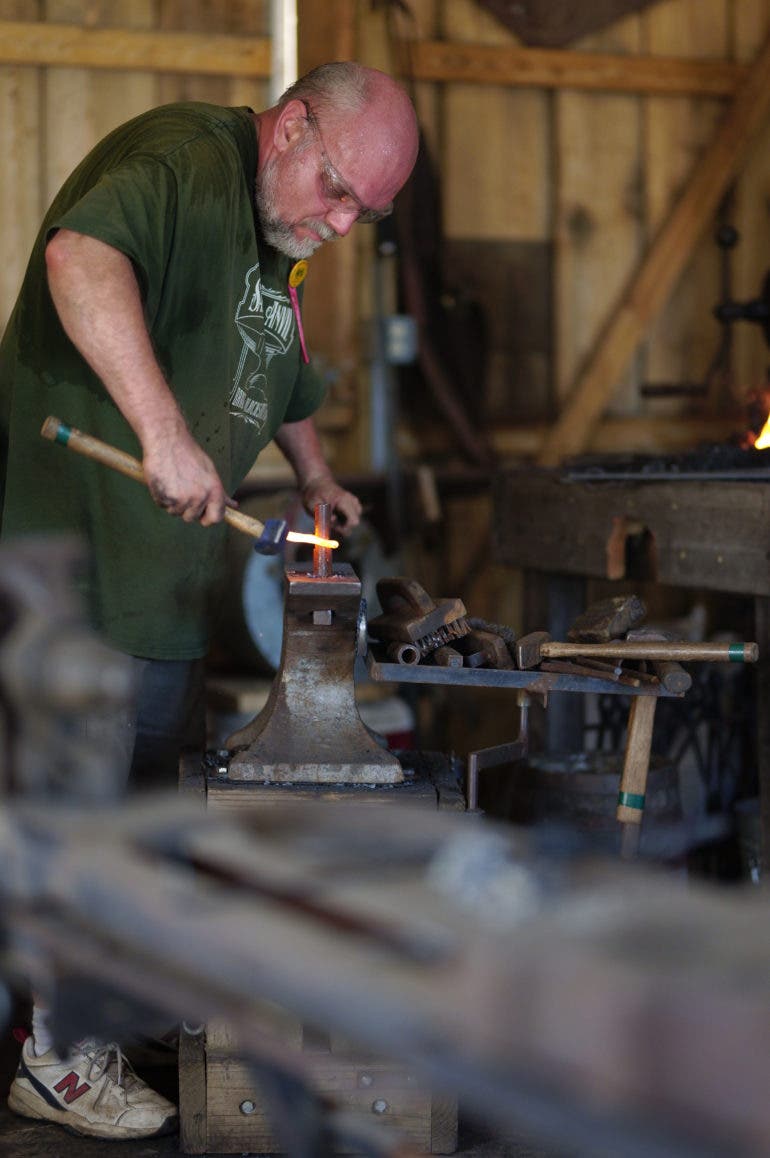
I photographed a series of indoor photos at ISO 1600 that rendered quite beautifully. The colors are still great and the noise is very minor. Noise becomes a bit more obvious at ISO 3200. If I’m pixel peeping, I wouldn’t take it above ISO 8000 where the noise starts to affect this sharpness and smooth out the fine details.
If you’re not pixel peeping, however, you can get away with even higher ISO settings. I printed out an ISO 12800 image at about 13 by 19 on the Epson ET-8800 with Epson Ultra Premium luster paper. The fine details were soft at ISOs this high — you’re not going to get a ton of texture. But, the larger details were still intact. At a typical viewing distance on a wall, the higher ISOs won’t look terrible at all.
RAW FIle Versatility
I was able to recover two stops of shadows on underexposed RAW photos, which is quite good. While colors were quite muted when overexposed, I could recover some of them. Skin tones don’t fare as well when bringing down the highlights, however. Like most cameras, this is one that you’re better off underexposing than overexposing, but there is some wiggle room.
Extra Image Samples
From day one, the Phoblographer has been huge on transparency with our audience. Nothing from this review is sponsored. Further, lots of folks will post reviews and show lots of editing in the photos. The problem then becomes that anyone and everyone can do the same thing. You’re not showing what the lens can do. So we have a whole section in our Extra Image Samples area to show off edited and unedited photos. From this, you can make a decision for yourself.
Edited
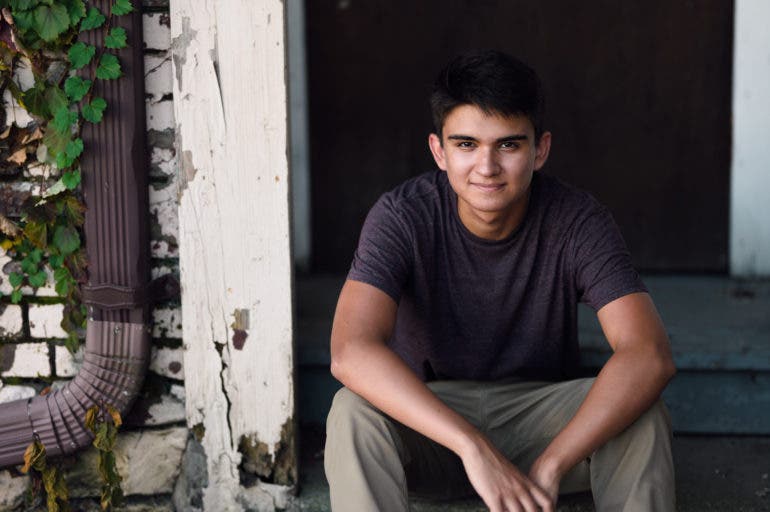


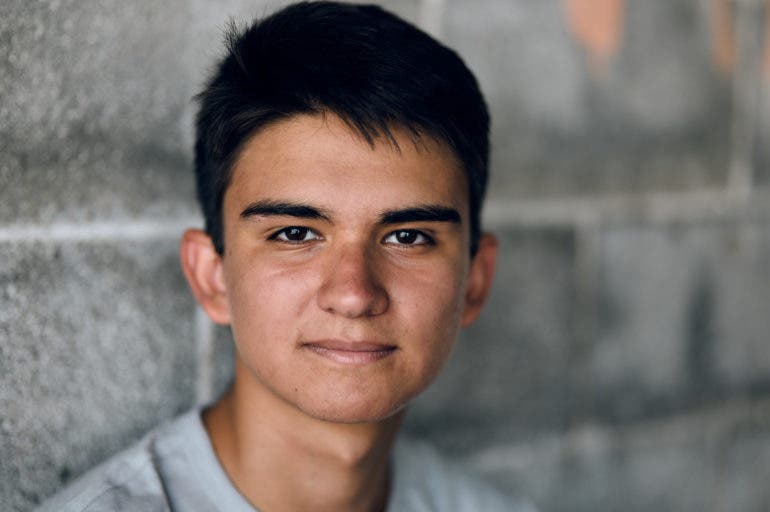
Unedited
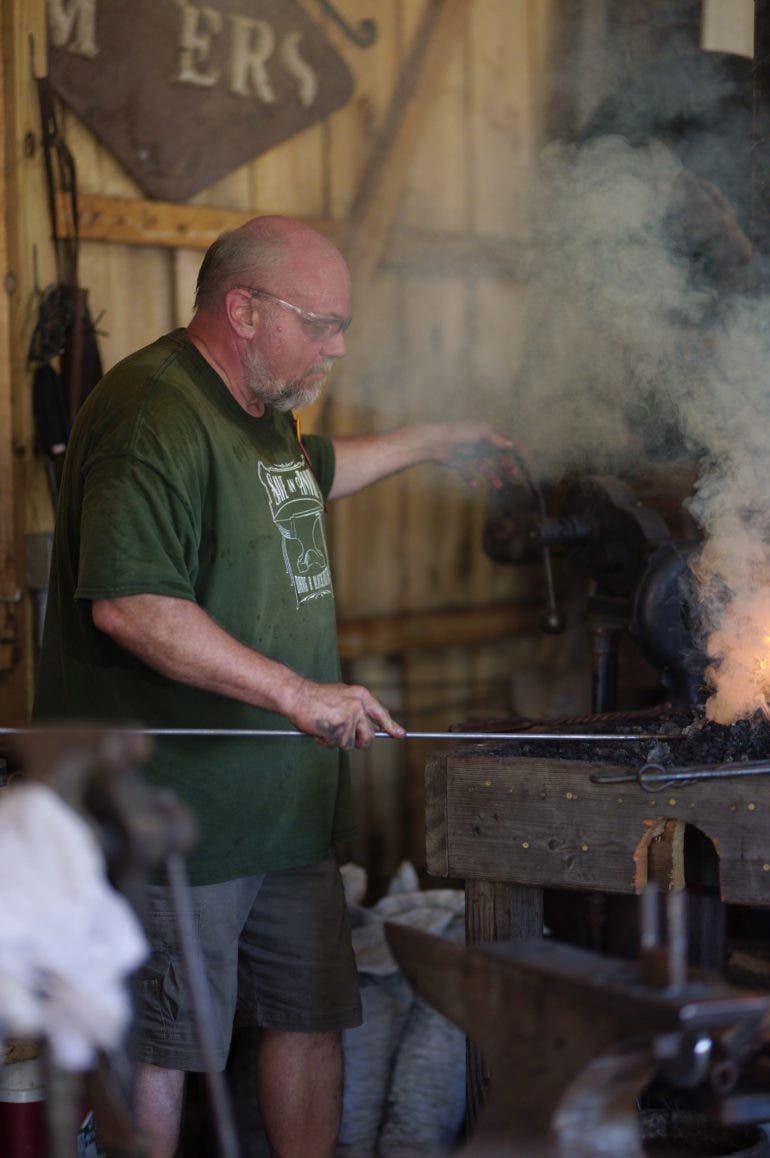
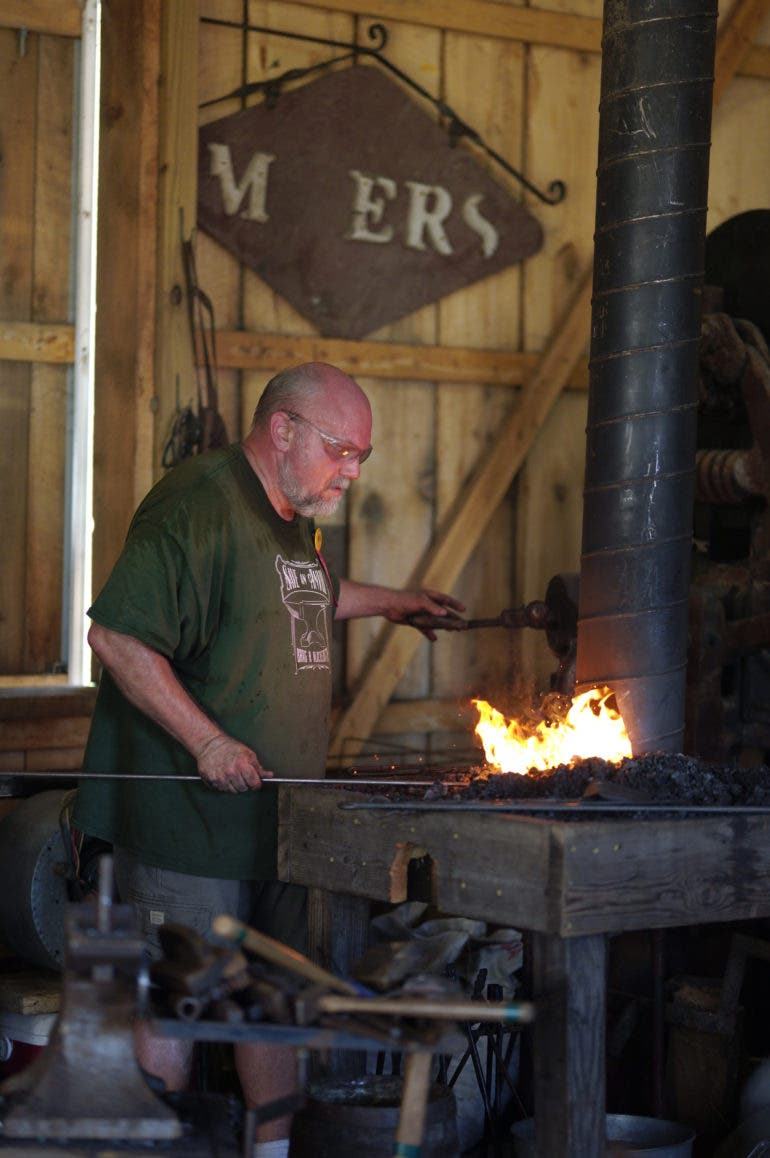





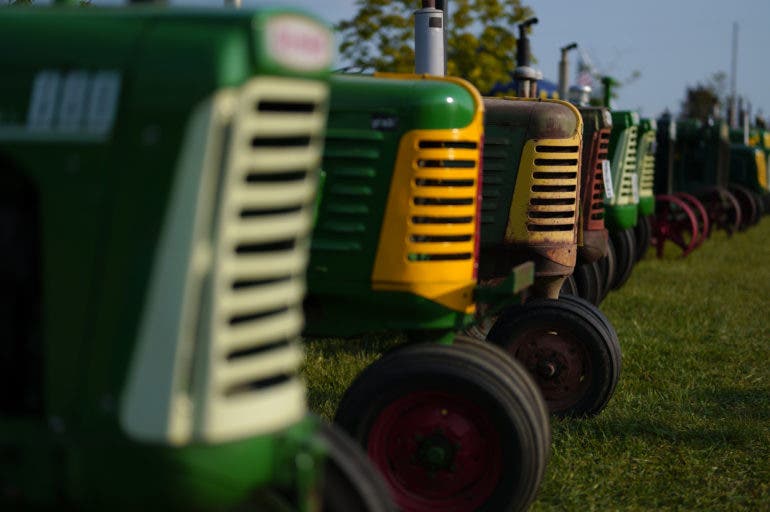


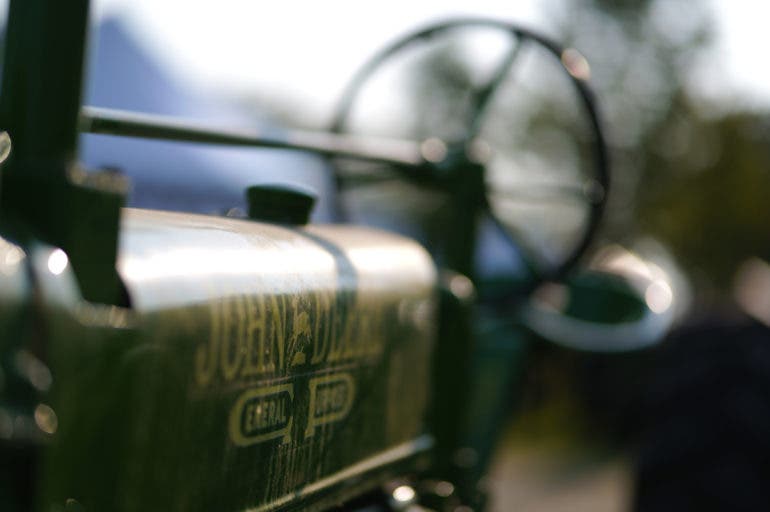
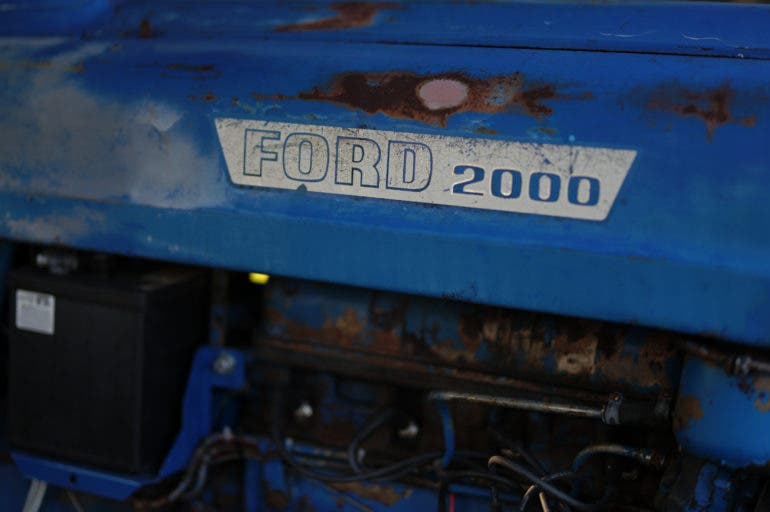




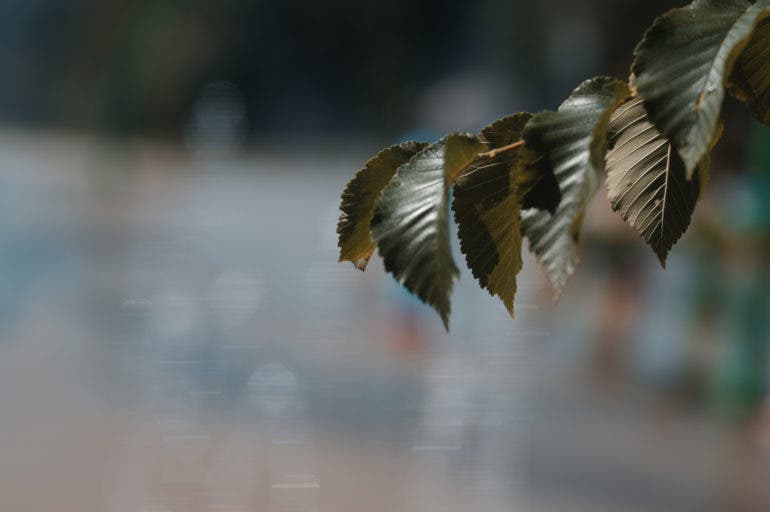



Conclusion
Likes
- The image quality is good, with clean images even at higher ISOs.
- I love the colors straight out of the camera when properly exposed, as well as the different in-camera color profiles.
- The fp L is very small.
- You can somewhat customize what you need with the few add-on options.
Dislikes
- Add-on design means you can add a viewfinder or a hot shoe slot, but not both at once. And it blocks all the ports.
- There’s only one SD card slot.
- It’s really uncomfortable to hold as-is.
- It’s not compatible with most straps — you’ll have to get the kind made to fit in the tripod socket.
- Performance is slow.
- Autofocus can’t keep up with moving subjects.
- It lacks optical stabilization.
- It suffers from significant rolling shutter.
- The lack of controls makes adjusting settings more difficult.
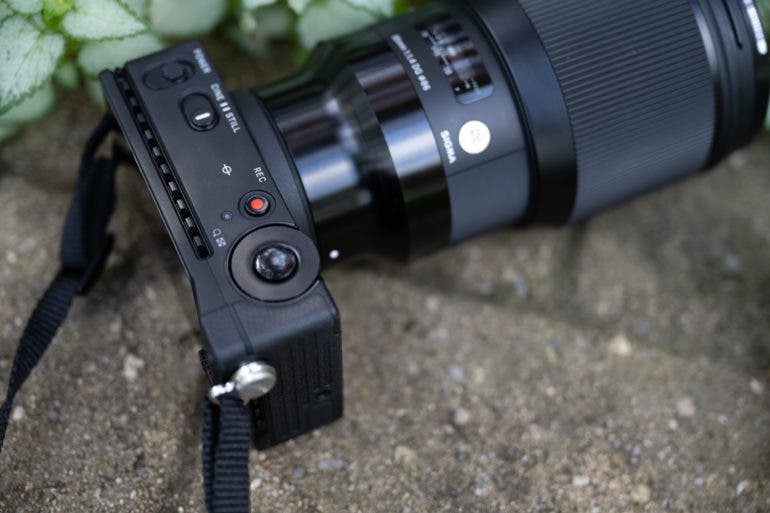
The Sigma fp L is one of the most innovative full-frame cameras on the market. The design is unlike any other camera out there (except for the original fp). While Sigma doesn’t say who made the sensor, their website hints that the Bayer design is not one of the Sony sensors that are in several other cameras. It’s a freaking modular camera, for crying out loud.
But, sadly, the features that are not innovative, the features that are expected because they are found on every other full-frame camera, are missing. There’s no mechanical shutter. There’s no stabilization. There’s only a single SD card slot. You have to add your own viewfinder and grip. And, if you do, you lose the add-on hot shoe slot. Performance is slow.
The weight and size savings simply aren’t worth it — and are much smaller than you’d think once you add the viewfinder and grip for handheld shooting. I can see the boxy design being loved among gimbal-using videographers. I would really love to see this camera mounted to a drone, where every ounce really does matter. But for the average photographer shooting a handheld camera, there’s little that’s tempting about the fp L. The colors and images are beautiful, yes, but are too strongly overshadowed by design and performance flaws.
The Sigma fp L retails for $2,500. The viewfinder adds another $699 and the grip another $95. That adds up to about $3,300. That makes it pricier than the Nikon Z7 II, slightly cheaper than the Sony a7R IV, and about $600 cheaper than the Canon EOS R5. That, for me, is the final straw — why not get the cheaper Nikon Z7 II or Sony a7R IV? Both have stabilization, a mechanical shutter, better autofocus systems, and a more comfortable control scheme. If the Sigma fp L had a price drop — where it was priced knowing there are features missing — I might be more inclined to give it another star.
Sigma, if you’re reading this, I applaud the innovation, the outside-the-box thinking. I’m excited at the possibility of a true modular camera. And, I don’t think you should stop innovating. But, I think the fp series needs a major boost in performance and usability. For a modular camera to work, it needs to have add-ons that make it more flexible than the traditional mirrorless camera. As it stands, the modular design makes the Sigma fp L more limited, not more flexible. If you’re going to make the fp L as loved as your Art series lenses, you’re going to have to bring more than just a compact design.

I’m giving the Sigma fp L two out of five stars. We recommend trying one out at LensRentals first.

